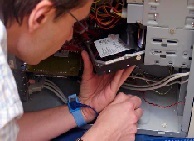by
Lisa Chamoff, Contributing Reporter | August 12, 2016
From the August 2016 issue of HealthCare Business News magazine
About two years ago, leadership at the William Osler Health System in Toronto, one of the largest community hospital systems in Canada, realized there needed to be a strategic, long-term plan in place for when it came time to replace the large fleet of mostly new diagnostic equipment at its 1.3 million-square-foot Brampton Civic Hospital site. Osler is also building a new wing at Etobicoke General Hospital in Toronto and opening a third site in Brampton in early 2017. “It’s going to have a huge financial burden on us, as all the equipment is going to need to be replaced at around the same time,” says Joanne Flewwelling, executive vice president of clinical services and chief nursing executive for Osler. “We’re going to run into this again and again with the new buildings.”
After putting out a request for proposal, Osler signed a $154 million, 15-year contract with Siemens Healthineers through the company’s new Enterprise Services offering. The program includes equipment management, stretching the system’s financial burden for capital costs across 15 years, but it is not limited to just maintenance and technology upgrades.
Like many companies that offer enterprise- wide asset management solutions, Siemens also provides advisory services focused on improving workflow and clinical outcomes, as well as facility design services, training and education, procurement, financing and overall managed departmental services. “There’s a wide range of services, all focused on managing assets for our customers in a cost-effective, high-quality manner,” says Lisa Collins, vice president of Enterprise Services for Siemens Healthineers.
Starting with basics
Equipment management is still a large piece of the puzzle for many facilities. The Remi Group sticks to the basics of managing equipment maintenance, with one-third of its business in the medical field, and the rest in government and higher education. For hospitals, instead of having more than two dozen OEM or ISO maintenance contracts, they will have just one agreement with the North Carolina-based firm, which will provide one point of contact when there are equipment issues.
The company can generally save a hospital 17 percent to 25 percent compared to a maintenance contract, says Dan Schuster, chief executive officer of The Remi Group. There are also intangible aspects of the arrangement. “There’s less aggravation,” Schuster says. “Someone else is facing down the vendor. Believe me, when our client is down, it’s a code orange for us.”
